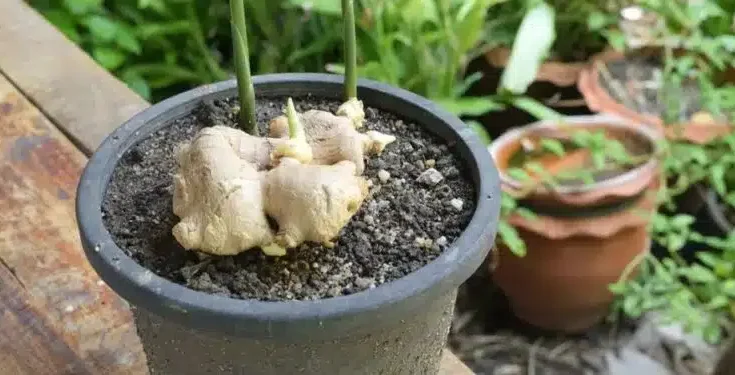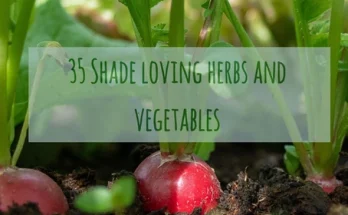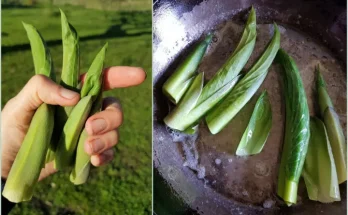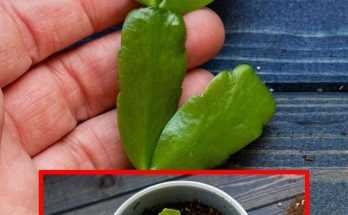Ginger is a superfood. We all love ginger and use it in most of our dishes. We also make different kinds of tea using ginger. The most popular tea of ginger is weight loss tea and headache tea.
Growing ginger at home is not that hard. Sure we have to wait and be patient to get our first harvest of ginger. We can grow ginger in the ground in a raised bed and in containers.
Ginger is a popular ingredient in Asian and Indian cuisine and has been used since ancient times, due to its miraculous properties. Namely, this amazing plant can be used as fresh, ground, or capsule form, and it will help you improve overall health in various ways.
It is a rich source of important minerals and vitamins, and gingerols, a compound with potent antioxidant and anti-inflammatory properties it contains, boosts health in unique ways.
It has an impressive nutritional profile, and 100 grams (about 3.5 ounces) of raw ginger provides:
- 80 calories
- 17.8 grams carbohydrates
- 1.8 grams protein
- 0.7 grams fat
- 2 grams dietary fiber
- 415 milligrams potassium (12 percent DV)
- 0.2 milligrams copper (11 percent DV)
- 0.2 milligrams manganese (11 percent DV)
- 43 milligrams magnesium (11 percent DV)
- 5 milligrams vitamin C (8 percent DV)
- 0.2 milligrams vitamin B6 (8 percent DV)
- 0.7 milligrams niacin (4 percent DV)
- 34 milligrams phosphorus (3 percent DV)
- 0.6 milligrams iron (3 percent DV)
Growing Ginger At Home Isn’t That Hard…
Step 1: Soak Your Ginger
Many ginger roots sold commercially are coated with a growth inhibitor, which prevent them from sprouting in the grocery store (even organic ones).
So, your first step after buying your ginger is to let it soak in water for 24 hours before slicing it up to plant.
Step 2: Look For Growth Buds
Look for pieces with well developed “eyes” or growth buds. (The buds look like little horns at the end of a piece or “finger”).
The indentations on the surface of the root is where the sprout will grow.
If the ginger you have doesn’t have any, you can even encourage them to do so by leaving them near a windowsill before you plant. (This just takes a few days)
Step 3: Choose a Wide Container
Because ginger’s roots grow horizontally, the width of your container will be more important than the depth. Once you’ve decided on what kind of container you’ll use, proceed to filling it with a rich potting soil that will drain well.
Step 4: Plant Your Ginger
Select pieces of the ginger knob that have “eyes” on them. Place the piece of ginger with the eyes facing up into the soil, and cover with about and inch and a half of soil.
How To Care For Your Ginger Plant
Place your ginger plant in indirect sunlight, somewhat warm. No wind or direct sun. This is why ginger makes such a great indoor grower. Soil should be damp at all times but not soggy, so water regularly. You can probably get a couple roots to grow nicely in a single twelve-inch container; they can grow to around 2 feet tall indoors.
After about eight months, your ginger plant will be mature. At that point, you can separate the rhizomes by pulling off a section of the plant including a piece of the rhizome. Transplanting is as easy as setting that rhizome into a new container of soil. Ginger is an easy root to share with a friend.
How To Harvest Ginger
Although the ginger plant may take many months to mature, you can harvest ginger when the plant is three or four months old.
When you push away the soil from around the rhizome, you’ll notice that ginger rhizomes look knobby. You will also see roots reaching outward and downward from the rhizome. The rhizome is the edible portion of ginger. The roots can be cleaned off as you clean the rhizome to eat.
To enjoy a bit of ginger, simply uncover a piece of rhizome, and trim off one of the finger-like extensions. You can harvest ginger in this manner anytime you wish.
However, you may find that you love it so much that you’ll need more than one rhizome planted at a time. You can alternate snipping from your plants if you grow more than one.
Before you eat ginger, you should rinse it and peel the skin off with a potato peeler. Then, enjoy your ginger freshly sliced or grated.
Or, dry your ginger by slicing it paper thin and setting it on a baking sheet. Place the baking sheet in an oven or outside in a dry, sunny location.
Ginger may take several hours or several days to dry. When it’s completely dried, it can safely be stored in plastic bags.
You can also grate your dried ginger with a coffee grinder. Grated ginger is a delicious result of an easy gardening project!




